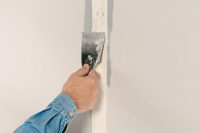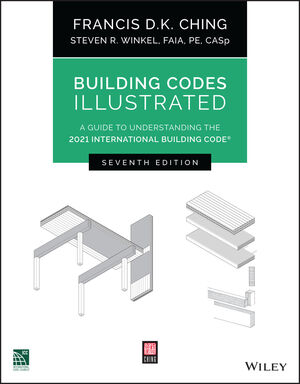
The Final Action Hearings to create the 2012 International Residential Code and the 2012 International Building Code concluded in mid-May. Three items of interest to drywall contractors were approved during the meeting.
The first item was a modification to the IRC that will require the application of a drywall or structural wood panel membrane to the underside of floor systems in non-sprinklered residential dwellings. The membrane can be either drywall-with a minimum thickness of 1/2 inch-or a 5/8-inch structural wood panel and, with the exception of areas over crawl spaces or areas less than 80 square feet, it must be continuously applied to the underside of the floor assembly. IRC requirements address single-family dwellings and townhomes of three stories or less.
The approved language addresses concerns identified in a 2006 National Institute for Occupational Safety and Health investigation of a Wisconsin house fire where two fire fighters fell through a floor and into the burning basement of a house, killing one and injuring the other, during a fire call. Among other points, the NIOSH report raised concerns about “lightweight construction” techniques and recommended that lightweight construction systems “be protected with a fire barrier.” Acting on the NIOSH recommendation, the International Association of Fire Fighters proposed a code change to the IRC that included a requirement for membrane floor protection, and, after a series of hearings and modifications that extended over two code cycles, the change was approved.
APPROVED CODE LANGUAGE
Technically, the approved code language applies to all floor systems; however, an exception exempting systems that incorporate minimum 2x10 nominal dimension lumber framing members limits the impact of the approved language to lightweight construction systems. Lightweight construction systems were developed in the 1970s to replace systems that incorporated dimensional lumber. Examples include particle board and lumber wood I-beam systems, glue laminated beams, and wood and steel prefabricated truss systems.
Because the ceilings of the first and second stories of a dwelling are typically covered by a drywall membrane, the primary effect of the language on new construction will be the requirement to install a membrane on the underside of the floor immediately above a habitable, non-sprinklered basement. However, what will be interesting will be the jurisdictional interpretation of the new language as it impacts alterations to existing dwellings where construction is intended to bring a house “up to code.” Could this cause a situation where the entire ceiling above a habitable basement must be covered by a membrane during a renovation? We’ll see.
The second and third changes both occur in the IBC. The first IBC change adds language that permits the ceiling membrane of a one- or two-hour floor-ceiling system to be interrupted by the “double wood top plate” of a partition as long as the fire-resistance rating of the wall system is not lower than the rating of the horizontal floor- or roof-ceiling system. The proposal was submitted by a group of code officials from Colorado and, after some massaging, received broad support from a variety of organizations.
The code modification addresses the problem that an applicator can encounter when installing a fire-rated partition to the underside of a gypsum-membrane fire-rated horizontal system. Construction sequencing operations often make it difficult to install the sheet or sheets of board to the underside of the floor system that provide a continuous membrane immediately above the point where the partition and the floor system intersect. During testimony code officials also noted concerns about the drywall membrane being crushed as the horizontal system moves and settles after building occupancy.
The approved language resolves the situation by allowing the double wood top plate to function as a substitute for the membrane and by acknowledging the fire-resistive contribution of the layers of board on the intersecting partition. It is notable that the approved language is not applicable to non-rated partition intersections and, because it is triggered by the requirement for a double wood top plate, it does not apply to traditional metal stud partitions.
ELEVATOR HOISTWAY APPLICATIONS
The second change in the IBC extends the structural integrity requirements, inserted into the code in 2006, for the protection of elevator and stair shafts to two additional elevator hoistway applications.
Structural integrity language for shaft enclosures was incorporated in the 2009 IBC with the approval of a Gypsum Association-sponsored proposal that required drywall enclosure systems to comply with specific criteria contained in the ASTM C 1629 standard. The C 1629 standard classifies impact-resistant drywall systems using a series of hard- and soft-body impact tests. The language approved in 2009 used the criteria in the C 1629 standard to establish minimum impact-resistance threshold limits for stair and elevator shaft enclosure systems installed in buildings over 420 feet in height. The language also permitted the use of masonry or concrete for enclosure systems.
Proposals approved for the 2012 IBC extend the scope of the applicable language to two new types of elevator enclosures: dedicated fire service access elevator enclosures and occupant evacuation elevator hoistway system enclosures.
Fire service access elevator systems are installed in buildings with an occupied floor more than 120 feet above the lowest level of fire department vehicle access-buildings approximately 180 to 200 feet in height. Fire service systems are specifically designed to permit fire fighter access to the upper floors of a building and, unlike traditional elevator systems that automatically shut down, are designed to operate continuously during a building emergency.
Occupant elevator evacuation hoistways are special elevator systems that can be used for self-evacuation of building occupants during fires or similar emergency events. Like fire service access systems, occupant evacuation systems are installed to operate continuously during an emergency event.
In both instances, the code voting body agreed with the logic that supported the imposition of the impact-resistant requirements onto the two specialty hoistway situations. As a result, the 2012 IBC will contain language expanding the use of impact-resistant drywall systems. W&C





